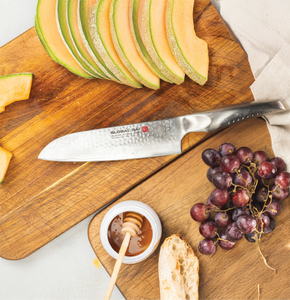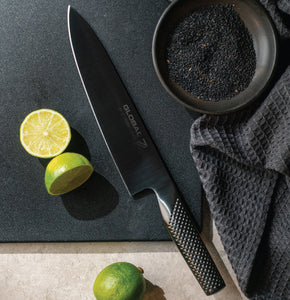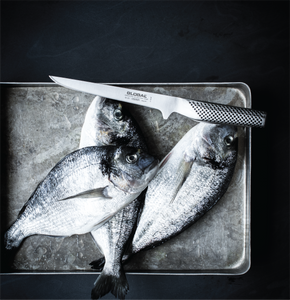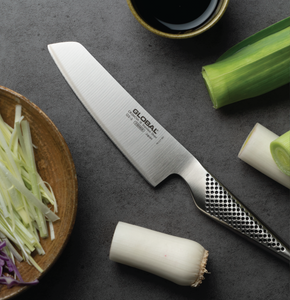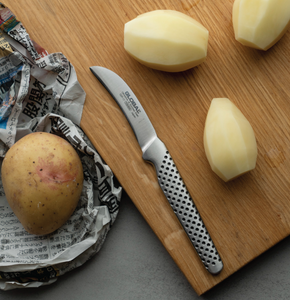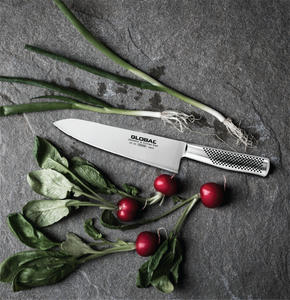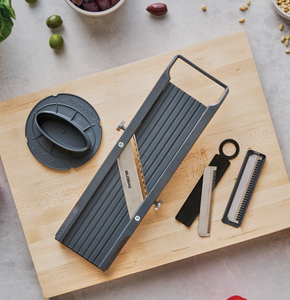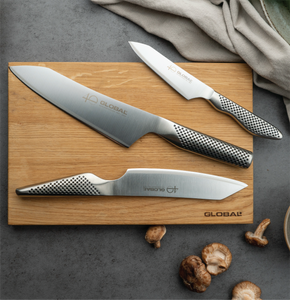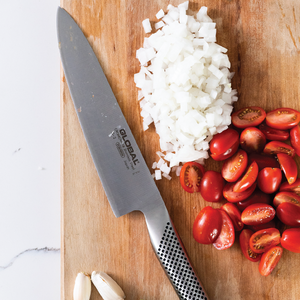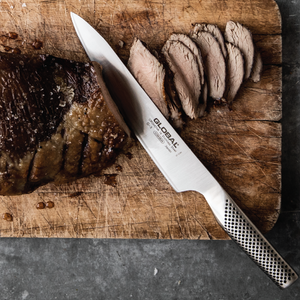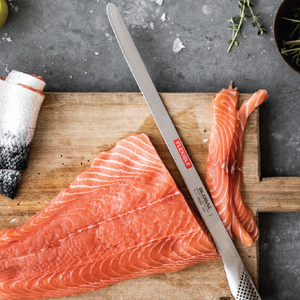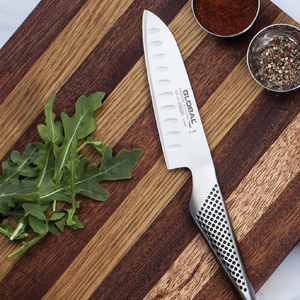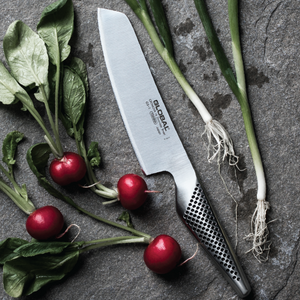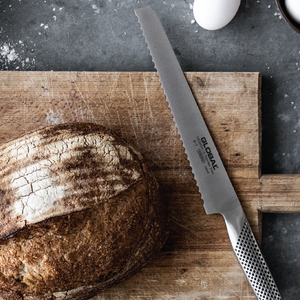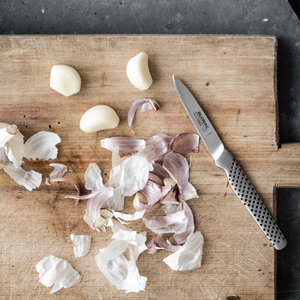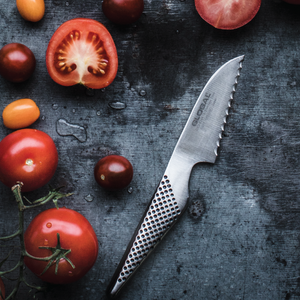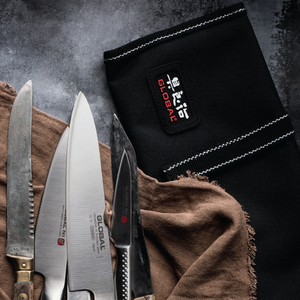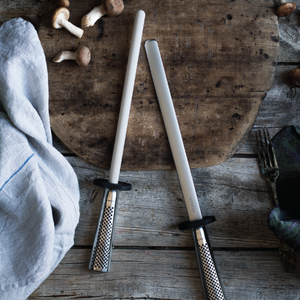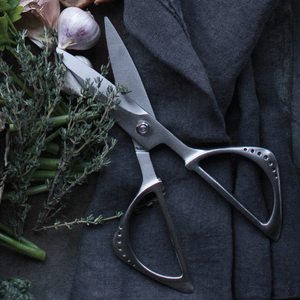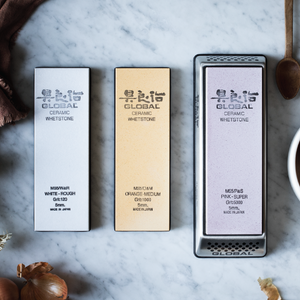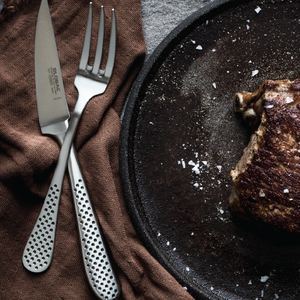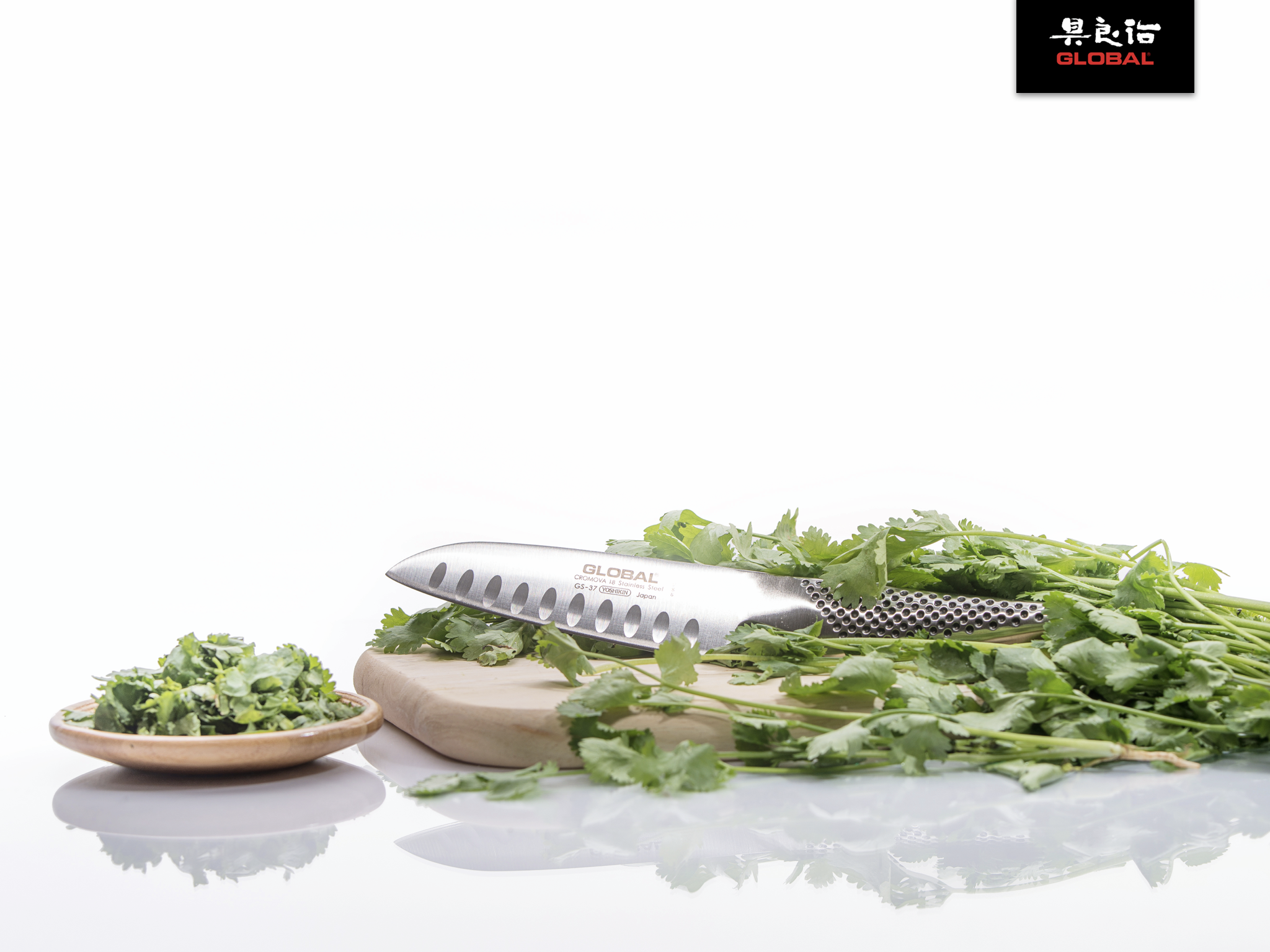Sharpening
Global knives come out of the factory with a very sharp edge and their proprietary blade material, CROMOVA 18, ensures that this sharpness will be maintained longer than in the case of many other knives. However, Global knives should be sharpened periodically using either a waterstone or a ceramic stone.
There are various types of stones available. Normally, a medium grit is sufficient with which to start. However, if the blade is blunt or damaged, it may be necessary to start with a rough grit.
Sharpening Method
1. Soak your stone in water for 10-15 minutes, or until all bubbles disappear.
2. Hold the knife so that the blade meets the stone at a 10-15 degree angle, then push back and forth across the stone in smooth steady strokes maintaining the same angle. Maintaining the same angle is most important. You will know you are maintaining the same angle from the sound the knife makes against the stone. If you are making the same sound with each stroke back and forth against the stone, you are maintaining the same angle.
3. Repeat 2 above on both sides of the blade going from one side to the other until your knife is sharp and there are no burrs on either side.
4. During sharpening a certain amount of wet powder will appear, but do not wash or wipe off this residue. Although this powder appears unsightly, it is this residue that sharpens the knives. If the stone gets dry, just add a few droplets of water to the stone and continue sharpening.
5. After sharpening, your knives should be washed in hot water and then towel dry.
Using Minosharp Water Sharpener
1. Fill the Sharpener with water, so it can wash the knife as it is sharpening.
2. Draw your knife about 7-8 times through the white wheel, which gives it a coarse grind, and then 7-8 times through the pink wheel for a fine grind.
3. Wash your knife with hot water and dry with a towel. Your knife is now ready for use.
Honing Knives : Tips and Techniques
Knife sharpening grinds the blade while honing is done to keep the edge of the knife straight. Unlike sharpening, which removes material and actually sharpens the blade, honing is more of a "fine tuning" of the blade and should be done often. Most professional cooks "steel" their knives everyday.
There are several ways to hone your knife, but they all share the same fundamental elements. Draw the entire blade across the honing steel at a 20 degree angle. Use a small amount of pressure evenly across the whole blade as it cuts across the steel.
How to steel your blade?
1. Hold your knife as you would carve a turkey and slice against the steel at a 20 degree angle making sure to apply even but light pressure as you sweep across the entire blade surface on your way down towards the counter.
2. Repeat on the other side of the blade and alternate on each side several times.
3. Don't grind hard against the steel or slap the blade against it. Listen for a light ringing sound as the blade moves across the steel.
4. At a certain point, honing the blade will become ineffective as the blade edge degrades from use (usually several months). At this point, it should be sharpened using a sharpening stone or other sharpening tool.
Cleaning and Caring for your Knives
High quality cutlery should be treated as a valuable and delicate tool. If you treat them with a small amount of care, they will repay you with a lifetime of use and enjoyment.
Clean your knives in hot soapy water and hand dry them before putting them away. We recommend using a magnetic wall mounted holder because they make your knives easily accessible.
Here are a few suggestions and things to avoid:
1. Never put your knives in a dishwasher. Pressurized water in a dishwasher bumps things around and this action will dull your blades quickly.
2. Do not drop your knives into a sink with other dishes and pots. You can easily cut yourself when reaching into a full sink and these items can and will damage the knives' edges.
3. Do not put your knives into a silverware drawer. Again, damage or cuts can result as well as dulling of the blade. If you must put your knives in a drawer be sure to use a protective sleeve.
4. Cut on a cutting board and not on the counter or especially a plate. One of the easiest ways to dull your blade is to cut against ceramic plates or other hard surfaces.


